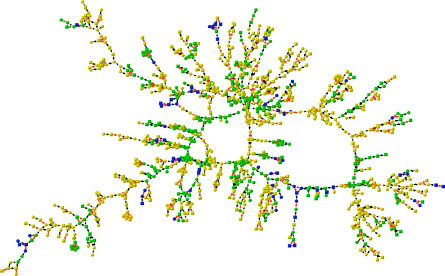
© Cacioppo et al., Journal of Personality and Social PsychologyA graphical representation of the social network of Framingham, Mass., shows lonely people clustering at the periphery of the network.
Staying socially connected may be just as important for public health as washing your hands and covering your cough. A new study suggests that feelings of loneliness can spread through social networks like the common cold.
"People on the edge of the network spread their loneliness to others and then cut their ties," says Nicholas Christakis of Harvard Medical School in Boston, a coauthor of the new study in the December
Journal of Personality and Social Psychology. "It's like the edge of a sweater: You start pulling at it and it unravels the network."
This study is the latest in a series that Christakis and James Fowler of the University of California, San Diego have conducted to see how habits and feelings move through social networks. Their earlier studies suggested that obesity, smoking and happiness are contagious.
The new study, led by John Cacioppo of the University of Chicago, found that loneliness is catching as well, possibly because
lonely people don't trust their connections and foster that mistrust in others.
